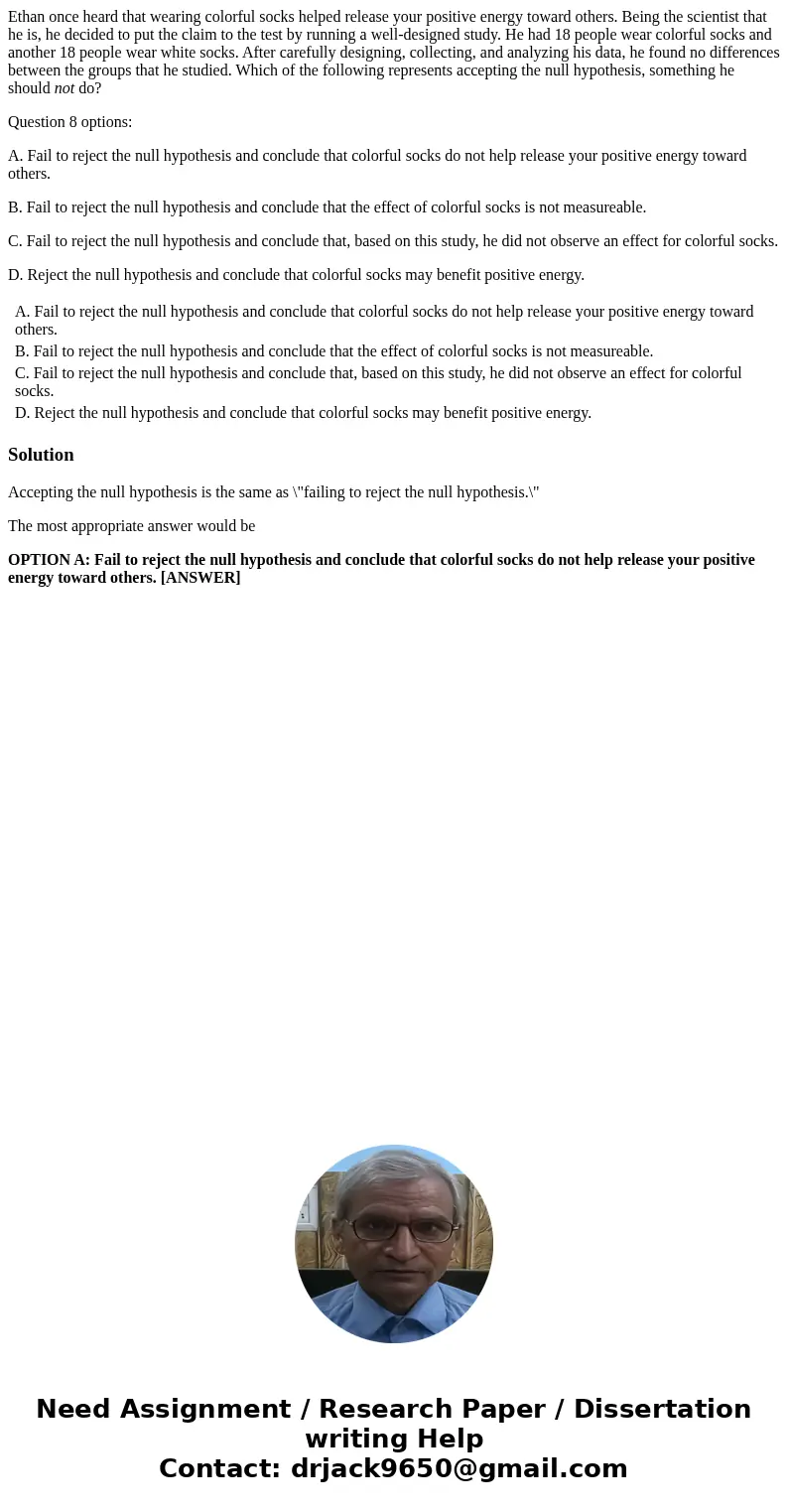Ethan once heard that wearing colorful socks helped release
Ethan once heard that wearing colorful socks helped release your positive energy toward others. Being the scientist that he is, he decided to put the claim to the test by running a well-designed study. He had 18 people wear colorful socks and another 18 people wear white socks. After carefully designing, collecting, and analyzing his data, he found no differences between the groups that he studied. Which of the following represents accepting the null hypothesis, something he should not do?
Question 8 options:
A. Fail to reject the null hypothesis and conclude that colorful socks do not help release your positive energy toward others.
B. Fail to reject the null hypothesis and conclude that the effect of colorful socks is not measureable.
C. Fail to reject the null hypothesis and conclude that, based on this study, he did not observe an effect for colorful socks.
D. Reject the null hypothesis and conclude that colorful socks may benefit positive energy.
| A. Fail to reject the null hypothesis and conclude that colorful socks do not help release your positive energy toward others. | |
| B. Fail to reject the null hypothesis and conclude that the effect of colorful socks is not measureable. | |
| C. Fail to reject the null hypothesis and conclude that, based on this study, he did not observe an effect for colorful socks. | |
| D. Reject the null hypothesis and conclude that colorful socks may benefit positive energy. |
Solution
Accepting the null hypothesis is the same as \"failing to reject the null hypothesis.\"
The most appropriate answer would be
OPTION A: Fail to reject the null hypothesis and conclude that colorful socks do not help release your positive energy toward others. [ANSWER]

 Homework Sourse
Homework Sourse